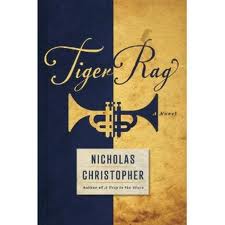One of the intriguing things about the early twentieth
century is how the history of that time is just tantalizingly out of
reach. Often we have only oral histories
to inform us, with sound or video documentation coming years later. For fans of American music, these tidbits can
be quite tantalizing. How did the early
bluesmen sound when they were playing a gig?
What were their repertoires really like?
Tiger Rag spends
a great deal of time fleshing out one of those mysteries. Buddy Bolden, by all accounts a seminal
figure in the early development of jazz, died without ever recording. In the alternate world of Tiger Rag, Buddy
did record – but the resulting cylinders were long lost.
Christopher uses two narratives to tell his story. One is set in the past, starting with
Bolden’s recording session, & then following the cylinders through
time. The other is set in the present
day, as a dysfunctional mother and daughter take an impromptu road trip from
Miami to New York. Unbeknownst to them,
their own family history ties into the fate of the missing Bolden recording.
The strong point of Tiger
Rag is Christopher’s ability to make the history of jazz become alive. Recording sessions, gigs, it feels real in a
funky visceral sense. There are some
bigger names that become tangentially involved in the story, but primarily we
are dealing with those on the tangents – sidemen, siblings and spouses.
I was much less interested in the contemporary
storyline. While both Devon and Ruby
(her mother) were well developed characters, in such stark contrast to the
highly entertaining figures in the past, they felt thin. While turn of the century New Orleans felt
bold and alive, present day New York seemed pale and skeletal.
That being said, if you have an interest in traditional jazz,
or New Orleans in the early twentieth century, you’ll enjoy Tiger Rag.

No comments:
Post a Comment